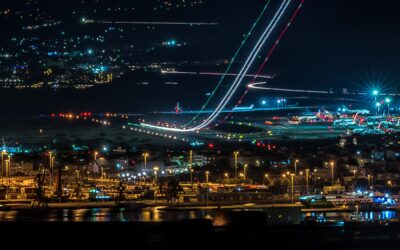
EASA Conversion without min. 50h PIC IFR
This possibility results from the legal regulations and is always available, regardless if a special permit has been issued. If you hold a valid ICAO CPL with ME IR, we recommend our EASA Fast Track Conversion due to the lower costs.
Requirements for training
- ICAO license (PPL or CPL)
- Valid ICAO instrument rating
- Valid medical for the ICAO license
- Proof of previous instrument flight training. This does not necessarily have to be completed.

Course of training
Step 1: EASA PPL acquisition (requires a total flight time experience of 100 hours)
The requirement for transfer is a basic license in which the IR can be entered. If you have already taken the theoretical ATPL exams, the passed subjects of Human Performance and Air Law can be counted towards the PPL. Otherwise, these subjects must be completed in a theoretical examination. Assuming that you have at least 100 hours of flying experience, the following requirements apply:
- 2 hours of single engine flight training for the acquisition of the class rating for single-engine land aircraft (SEP)
- approx. 1.5 hours practical test PPL
2. ATPL theory training
You complete the theoretical ATPL training conveniently via a distance learning course. The training can be started at any time and uses the most modern teaching materials. The training is web-based and also includes the prescribed brush-up instruction. The lecturers explain in great detail and explain difficult topics within the subject areas. More information can be found at www.theorieschule.aero . This is followed by the theoretical test at the aviation authority.
3. IR description
As part of the competencey-based instrument flight training, previous experience can be counted towards the required minimum requirement of 40 hours of practical training. A maximum of 30 hours can be considered. Depending on your previous experience, this results in a training scope between 10 – 40 hours of practical flight training.
- Depending on previous experience, 10 – 40 hours of practical training
- approx. 1.5 hours practical test
4. Acquisition of Multi Engine Rating VFR / IFR
If you are aiming for a career with an airline, you will need a multi-engine IR as an entry requirement for the type rating of a commercial aircraft. The training is divided into a VFR and an IFR parts.
VFR
- 7 hours of theoretical training
- 6 hours of flight training multi engine
IFR
- 5 hours of flight training multi engine
- approx. 1.5 hours of flight time for practical test
5. Acquisition of CPL
Holders of an instrument flight permit can shorten the CPL training to 15 hours. This presupposes that the night flight authorization is valid or a foreign night flight authorization is recognized by the competent authority. If this is not the case, at least 5 hours of flight training must also be flown at night. At least 5 hours of CPL flight training must be carried out on an aircraft that is approved for at least 4 people and is equipped with a controllable pitch propeller and retractable landing gear. This results in:
- 5 hours of multi engine flight training.
- 10 hours of single engine flight training.
- approx. 1.5 hours for the practical test
After graduation, this leads to an EASA CPL with ME IR incl. ATPL theory credit (frozen ATPL).
Training costs
The costs for this training are approx. 23,760 euros if 30 hours of instrument flight time can be credited. We would be happy to make you an individual offer, taking into account your previous experience. Here you will find our current Price list .
Any questions?
The training options are diverse and our website is no substitute for a personal consultation. We would be happy to advise you personally, taking your individual situation into account.
Latest news from our training department
Next night flight course starts on 26.1.2023
Night flight training is an important part of a pilot's overall training. This gives pilots the necessary knowledge and skills to recognize and avoid potential hazards during night flight operations. In particular, we teach them how to operate their aircraft safely in...

